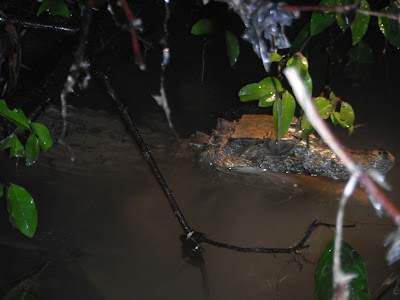Our half of the group stayed on a boat for the first 4 days, and then on the island Isabela for the last 3 days. On the boat, we usually snorkeled two times daily in various locations, and then did a sort of caminata (short walk) in the afternoon. The boat traveled during the night, so every morning we woke up to a different island and scenery!
Eden, the boat we stayed on
View of Santa Cruz, the first island we visited
First day of class
Red-footed boobies on the island Santa Cruz
Our guide Lenín showing us the skull of a dolphin
Every day, we saw animals we had never seen before, including marine iguanas, giant tortoises, and flamingos. But for me, the strangest part of the Galápagos is the lack of fear the animals have for humans. Because there have never been terrestrial predators, this instinct never developed in them. Even after seven days of observing, I couldn't get over how weird it was for a blue-footed boobie to walk within a foot of me or for a marine iguana to not move an inch as 13 people walked next to it.
A Nazca boobie on the island of Genovesa
And swim with them
View from the top of Bartolome
Flamingos!
We saw an incredible number of tortugas while in the Galápagos. Nearly every time we snorkeled, we saw between 3 and 20 of them.
Swimming with the turtles
On the island Santa Cruz, we visited a giant tortoise reserve! There were 5,000 on the island, and in total, there are 50,000 on the Galápagos.
Slacklining on the beach
It's hard to believe I get college credit for this :)







































